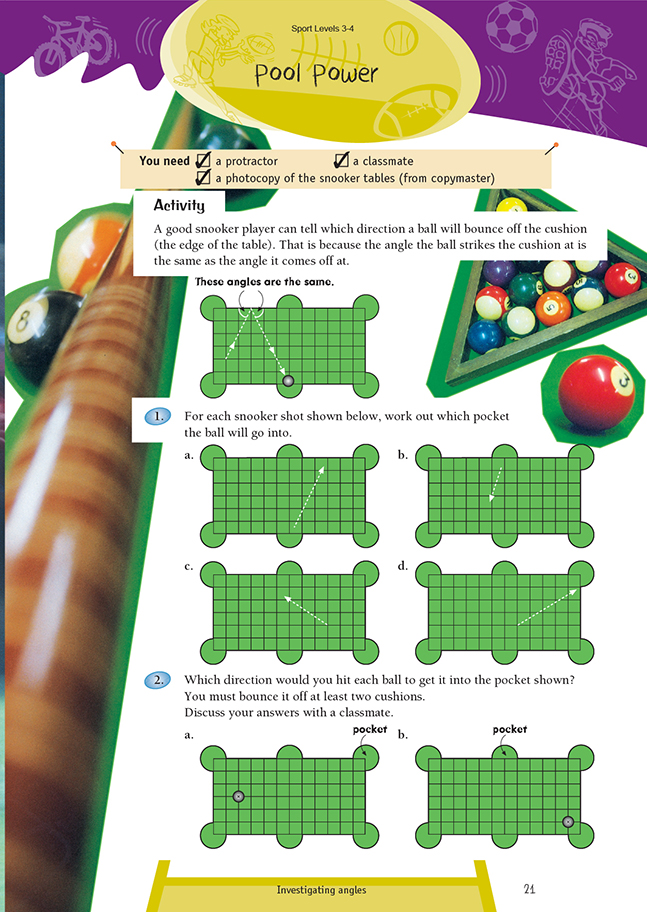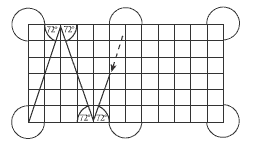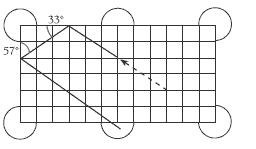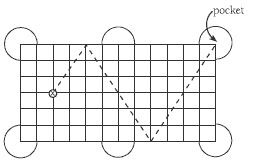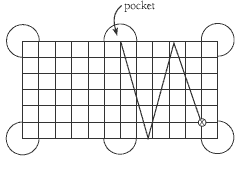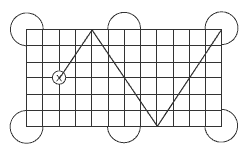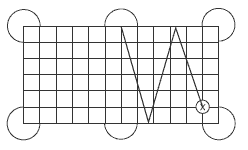This is a level 4 measurement activity from the Figure It Out theme series.
Click on the image to enlarge it. Click again to close. Download PDF (345 KB)
measure and draw angles using a protractor
FIO, Levels 3-4, Theme: Sport, Pool Power, page 21
A protractor
Copymaster of Snooker tables
A classmate
You will find a copymaster for this activity at the end of these notes. The students will use similar skills to those used for question 4 on page 19 to work out the path of each ball. For example, for question 1b, they will draw the path of the ball like this:
The students will notice that if the ball is bouncing off cushions on opposite sides of the pool table, the size of the angles will be the same. If the ball bounces off two cushions that are at right angles to each other, the two angles will add up to 90°. For example, for question 1c:
In question 2, the students work backwards, which is a significant problem-solving strategy. Rather than randomly drawing an arrow from the pool ball in the direction of a cushion, it is more effective for the students to use the grid pattern to work out where the ball hits each cushion. In example 2a, the ball must travel 10 squares to the right and strike two cushions. Obviously, the top and bottom cushions are the easiest to bounce off. The ball starts its journey in the centre of the table width-wise, so it will cross the width of the table two and a half times. 10 ÷ 21/2 = 4, so the ball should travel four squares to the right on each journey across the table. In the first journey, it travels halfway across the table, so it travels only two squares to the right. The diagram below shows how this works:
On the pool table in 2b, the ball must travel five squares to the left while rebounding off at least two cushions. To do this, it will cross the width of the table three times. 5 ÷ 3 = 12/3, so the ball should travel 12/3 squares to the left for each crossing to end up in the top centre pocket. The diagram below shows how this works:
Answers to Activity
1. a. Bottom right
b. Bottom left
c. Bottom middle
d. Bottom left
2. a.
b.
